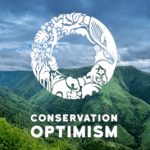Wondering what went right this week in the conservation world? We’ve got you covered with our Conservation Optimism Round-Up! We are collating stories of optimism from around the globe so that you never miss your dose of weekly motivation.
1. Lynx, Wild Horses and Vultures Return to Eastern Spain in Latest Rewilding Project
” Black vultures, lynx and wild horses are among the animals being reintroduced to eastern Spain with the launch of a rewilding project spanning 850,000 hectares (2.1m acres) in the Iberian highlands east of Madrid. ”
A new 2.1 million ac #rewilding project in #Spain will result in the reintroduction of Black #Vultures, Iberian #Lynx, and other #endangered #wildlife!#cats #bigcats #iberia #nature #biodiversity #conservationoptimism #conservation #LetNatureThrive https://t.co/UB1NS24XMV
— Global Conservation Solutions (@_GCS_) October 29, 2022
2. The Galapagos penguin, one of the world’s rarest, sees a glimmer of hope
” Today, at least 84 of the 120 nests that Boersma, a biologist at the University of Washington in Seattle, and colleagues have scoured from the black rock at the world’s Equator are still usable. And a recent census reveals a quarter of the endangered species are juveniles.”
Thanks to #conservation efforts in #Ecuador, the #endangered Galápagos #Penguin has had it's best breeding season in more than 12 years!#recovery #penguins #galapagos #nature #wildlife #biodiversity #optimism #conservationoptimism #news #LetNatureThrivehttps://t.co/PmZMDQsIm8
— Global Conservation Solutions (@_GCS_) October 28, 2022
3. Enigmatic binturong photographed in Nepal for the first time
” “I am very glad that we persisted and that we have photographic evidence of its existence,” Shah, also a co-author of the recent study documenting the discovery in Parshyang, tells Mongabay. That the animal, considered primarily a resident of East and Southeast Asia, was found in the Chitwan-Annapurna Landscape (CHAL) in western Nepal has left conservationists surprised. “
Did you know there is an animal endemic to South - Southeast Asia that looks like a mix of Bear 🐻 + Cat🐱 but it's none of the two.
— TORquED.eth (@DigiMaverick) October 27, 2022
I learnt about it not for books or docu-films but from a game: #UnseenEmpire. https://t.co/LxwjrzSkXt #gamingforgood #conservationoptimism
4. Critically Endangered Gigantes Limestone Frog Successfully Bred For First Time In Captivity
” The critically endangered Gigantes limestone frog, an amphibian species native to the Philippines, was successfully captive bred by Project Palaka, marking the first instance in which the frog has been captive bred.”
Good news and teeny tiny baby frogs, what else could we want? 🐸
— Synchronicity Earth (@SynchEarth) October 26, 2022
We're thrilled to congratulate @PalakaProject on successfully breeding the critically endangered Gigantes limestone frog, the 1st time this frog has been captive-bred!https://t.co/ajYLoygak1 #ConservationOptimism
5. Greenland shark, world’s longest-living vertebrate, gets long-awaited protection
” In September, the Northwest Atlantic Fisheries Organization (NAFO), an intergovernmental organization that manages fisheries, prohibited the retention of Greenland sharks in international waters. This ban would apply to the intentional catching of Greenland sharks as well as the retention of the species as bycatch. “
Greenland sharks can live up to 500 years.
— Nina Seale (@hirundonova) October 25, 2022
There are sharks out there who were born when Henry VIII was busy slaughtering his wives.
ANYWAY its now illegal to catch/retain them in international waters.https://t.co/8SviPIZ7G6 #ConservationOptimism
6. Gough Island demonstrates that island restoration and invasive predator eradication can work
” Breeding success of Tristan’s Albatross is 75.5% in 2022, double the 2004 average”
PHENOMENAL ALBATROSS BREEDING SUCCESS: Breeding success for Tristan #albatross is a massive 75.5% in 2022 – more than 2x the 2004-2021 average! Our team counted 1,186 chicks from 1,570 pairs, hardening our resolve to achieve a mouse-free future for #Gough #conservationoptimism pic.twitter.com/e7wu1nILYN
— Gough Island Restoration (@GoughIsland) October 25, 2022
7. Juvenile endangered seahorses have been released again in man-made ‘seahorse hotels’
” Juvenile endangered White’s seahorses (Hippocampus whitei) have been released back into the wild this week at 15 ‘seahorse hotels’ in Botany Bay, Sydney. This is the third successful release of seahorses bred and raised by experts from SEA LIFE Sydney Aquarium, in a three-year ongoing collaboration to help recover the species’ declining population. “
Juvenile endangered seahorses have been released in man-made ‘seahorse hotels’ to aid in population recovery after being severely affected by habitat destruction. #conservationoptimismhttps://t.co/xefvabboYu
— Save Our Seas (@saveourseas) October 24, 2022
Have a story to share for our weekly round-up? Use #ConservationOptimism on Twitter, Facebook, LinkedIn and Instagram!


